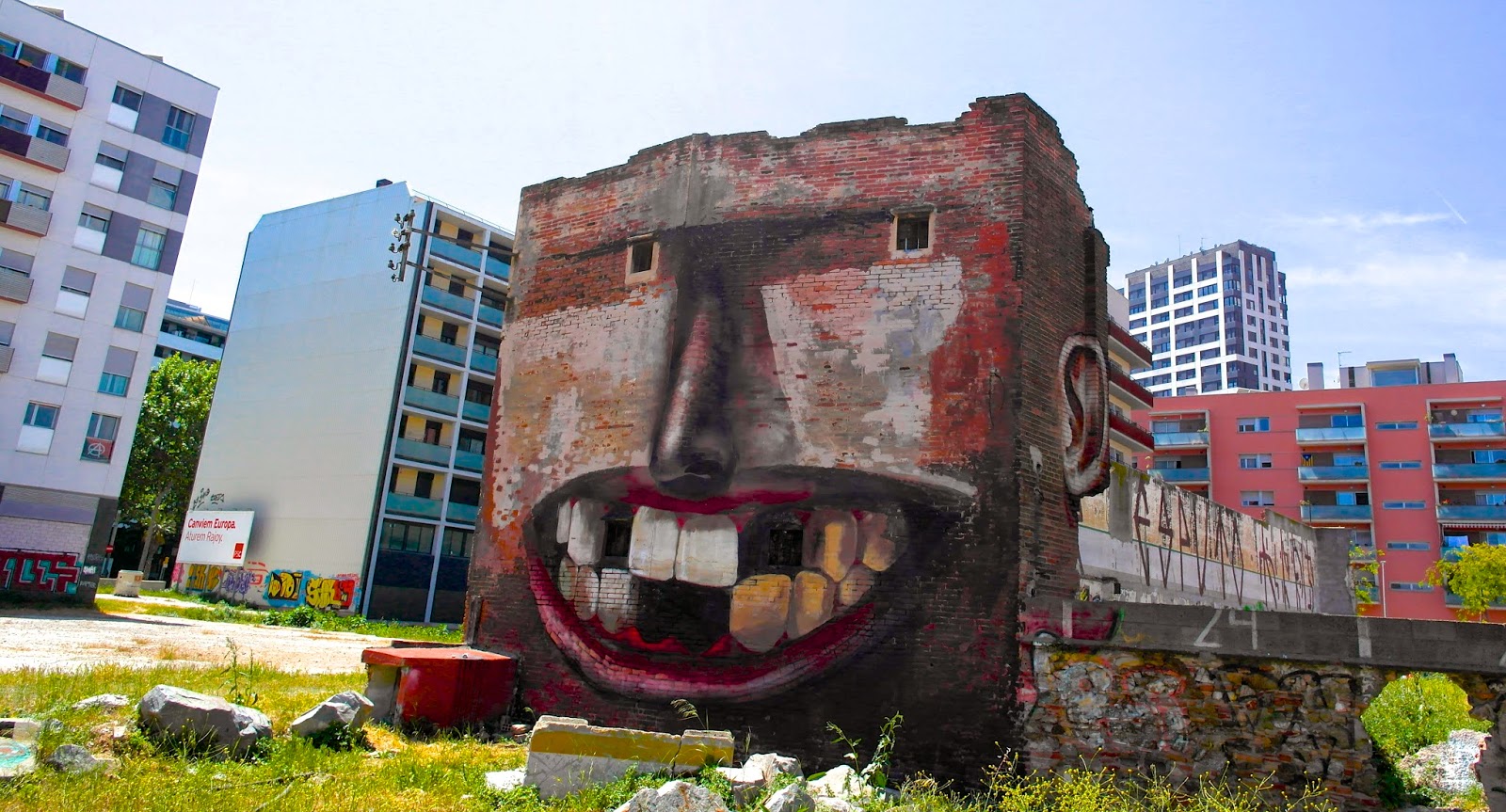In the middle of Stavanger city there is a huge wall with letters, a text made by Ben Eine, on of my faviourite street artists. I saw it first time late evening and it was dark but the wall was lighten up with spots.
I could make make words of the letters, and the sentence made just partly sense. The words and the sentence was poetic.
Months later, I'm sitting on the the light train home from work and listen to music as usual. I listen to Jack White and "Bing!!!" the connection is made. The lyrics of Jack White and writing on the wall in Stavanger. I've heard thet song "Love interruption" lots of times, but never made the connection before. It's a great song. If you look closely Ben Eine`s text is altered a bit from the original lyrics.
Love Interruption
I want love to: roll me over slowly,
Stick a knife inside me, and twist it all around.
I want love to: grab my fingers gently,
Slam them in a doorway, Put my face into the ground.
I want love to: murder my own mother,
Take her off to somewhere, like hell, or up above.
And I want love to: change my friends to enemies,
Change my friends to enemies, and show me how it's all my fault.
And I won't let love disrupt, corrupt or interrupt me
I won't let love disrupt, corrupt or interrupt me
Yeah I won't let love disrupt, corrupt or interrupt me, anymore.
I want love to: walk right up and bite me,
Grab a hold of me and fight me, leave me dying on the ground.
I want love to: split my mouth wide open,
And cover up my ears and never let me hear a sound
I want love to: forget that you offended me,
Or how you have defended me when everybody tore me down
Yeah and I want love to: change my friends to enemies,
Change my friends to enemies, and show me how it's all my fault.
Yeah I won't let love disrupt, corrupt or interrupt me
I won't let love disrupt, corrupt or interrupt me
Yeah I won't let love disrupt, corrupt or interrupt me, anymore.












 Sometimes one finds a treasure out there and I found one in Barcelona. it's not a treasure of money, not of any value, unless one loves art, art in the streets. On my trip to Barcelona I found an old Dolk stencil in the dark and gothic part of the city.
Sometimes one finds a treasure out there and I found one in Barcelona. it's not a treasure of money, not of any value, unless one loves art, art in the streets. On my trip to Barcelona I found an old Dolk stencil in the dark and gothic part of the city.

